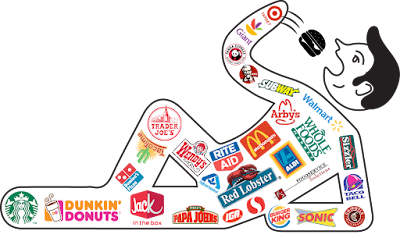The food retail industry is experiencing a seismic shift as
macroeconomic factors, particularly the imposition of tariffs, reshape consumer
behavior and compel retailers to adapt swiftly according to Steven Johnson Grocerant Guru® at Tacoma, WA
based Foodservice Solutions®. Price-sensitive consumers are now more
discerning, prompting restaurants, convenience stores, and grocery stores to
innovate in their offerings, pricing strategies, and marketing approaches to
sustain brand trial and customer retention.
Impact of Tariffs on Consumer Behavior
Recent tariffs on imports from key trading partners have
driven up the prices of essential food items, especially fresh produce. For
example, the U.S. imports nearly 45% of its fresh fruit and 32% of its fresh
vegetables, with Mexico being a primary supplier. Tariffs on produce such as
avocados, tomatoes, and citrus fruits have led to price hikes that
disproportionately impact low- and middle-income families who already spend a
significant portion of their income on food.
According to the USDA,
food-at-home prices rose 5.6% year-over-year, while food-away-from-home prices
increased 8.4%. These financial pressures have led consumers to rethink dining
choices, meal planning, and brand preferences. As inflation persists, grocery
spending has shifted toward private-label brands, and restaurant visits have
increasingly centered around promotional deals and value-driven menus.
Strategies in the Restaurant Industry
1.
Value-Based Pricing: Some restaurants are shifting to a value-based pricing
model, setting menu prices according to perceived customer value rather than
cost alone. This approach is particularly effective in quick-service
restaurants (QSRs) and casual dining, where customers prioritize affordability.
2.
Good-Better-Best
Menus: Many restaurant chains, such as McDonald's and Panera Bread, have introduced
tiered pricing strategies to cater to different budget levels. A
"good" option provides a basic meal at an entry-level price, while
"better" and "best" tiers offer enhanced ingredients, premium
add-ons, or combo meal incentives.
3.
Digital and
App-Based Discounts: Digital ordering platforms and mobile
app-based rewards programs have gained traction, with Starbucks and Taco Bell leveraging
personalized promotions to drive loyalty and first-time trials.
Adaptations in Convenience Stores
1.
Everyday Low Pricing
(EDLP): Convenience stores, including major
players like 7-Eleven, are adopting EDLP to attract budget-conscious consumers.
Maintaining stable, low prices fosters trust and encourages repeat business.
2.
Penetration Pricing: To capture market share, convenience stores are
introducing new products at promotional launch prices. For example, Wawa has
tested limited-time discounted items in its foodservice section to encourage
trial before transitioning to regular pricing.
3.
Private Label
Expansion: Many convenience chains are investing
in private-label food and beverage products to offer lower-cost alternatives to
national brands while maintaining competitive margins.
Innovations in Grocery Stores
1.
Supplier
Negotiations: Large grocery retailers like Walmart and Kroger are actively negotiating
lower costs with suppliers to mitigate tariff-induced price increases. Walmart,
for instance, has requested price cuts of up to 10% from Chinese suppliers to
maintain affordability.
2.
Local Sourcing: Retailers are shifting toward domestic supply chains to
minimize the impact of tariffs. Regional grocers such as Publix and H-E-B have
expanded partnerships with local farms, reinforcing their commitment to fresh,
locally sourced products.
3.
Shrinkflation &
Smart Packaging: To offset rising costs without
deterring consumers, brands are downsizing product sizes (shrinkflation) or
optimizing packaging to maintain pricing integrity.
4.
Subscription and
Membership Models: Grocery stores like Sam’s Club and
Amazon Fresh are leveraging membership-based discounts to lock in customer
loyalty and drive recurring purchases despite price fluctuations.
Top Five Strategies to Drive New
Customer Trials
1.
Transparent Pricing
& Honest Marketing: Clearly
communicating price structures and value propositions builds consumer trust and
fosters brand credibility.
2.
Promotional Sampling
& Limited-Time Offers: Sampling programs
at grocery chains like Costco and targeted BOGO (buy-one-get-one) deals in QSRs
entice hesitant consumers to try new items.
3.
Loyalty &
Rewards Programs: Restaurants and retailers alike are
refining rewards systems, such as Chipotle’s tiered loyalty program, to
incentivize repeat visits and trials.
4.
Bundling Offers: Pairing high-demand items with lesser-known products at a
discounted rate encourages discovery. McDonald's and Domino’s frequently bundle
menu items to increase trial of new flavors.
5.
Community Engagement
& Experiential Marketing:
Grocery stores like Whole Foods and Wegmans engage customers through cooking
classes, local food festivals, and influencer partnerships to showcase product
quality and drive brand advocacy.
Think About This
The current economic landscape, driven by tariffs and
evolving consumer sensitivities, is accelerating transformation within the food
retail sector. Restaurants, convenience stores, and grocery chains must stay
agile—leveraging innovative pricing models, loyalty incentives, and strategic
sourcing to navigate cost pressures while ensuring sustained brand engagement
and customer retention.
Elevate Your Brand with Expert
Insights
For corporate presentations, regional chain strategies,
educational forums, or keynote speaking, Steven Johnson, the Grocerant
Guru®, delivers actionable insights that fuel success.
With deep experience in restaurant operations, brand
positioning, and strategic consulting, Steven provides valuable takeaways
that inspire and drive results.
💡 Visit GrocerantGuru.com or FoodserviceSolutions.US
📞 Call 1-253-759-7869







No comments:
Post a Comment